Overview of the 100A Manual Transfer Switch
A 100A manual transfer switch is a crucial electrical device designed to safely switch power sources between utility and backup systems, ensuring reliable operation during outages.
Importance of a Manual Transfer Switch in Electrical Systems
It provides a secure way to transition between power sources, protecting equipment from damage and ensuring continuous operation in residential or commercial settings, especially during emergencies;
The 100A manual transfer switch is a double-throw device designed for safe power transitions between utility and backup sources. Rated for 100A, 120/240V, and 24,000W, it ensures reliable operation. Compatible with generators and solar systems, it features terminal connections for line, load, and emergency inputs. Available in indoor and outdoor enclosures, such as NEMA 3R, it provides durable and versatile power management solutions.
A manual transfer switch is essential for safely switching between utility and backup power sources, preventing damage to equipment and ensuring continuous operation. It protects electrical systems from voltage fluctuations and surges during outages. This device is crucial for residential, commercial, and emergency backup systems, providing reliability and peace of mind during power disruptions.
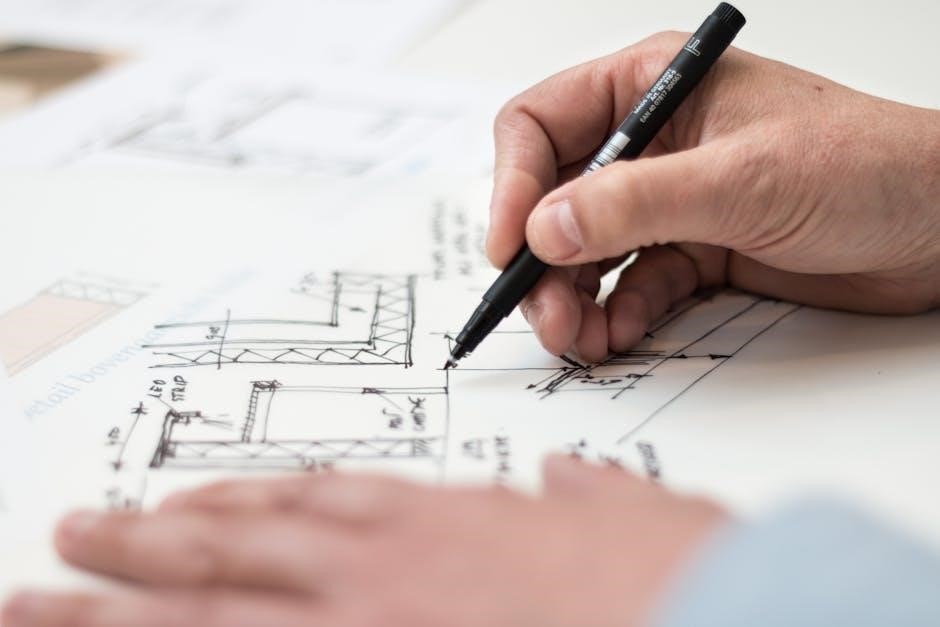
Key Components of a 100A Manual Transfer Switch
The 100A manual transfer switch includes line, load, and emergency terminals, with a rating of 100A, 120/240V, and 24000W. Enclosures are available for indoor or outdoor use, such as NEMA 3R-rated options.
Terminal Connections: Line, Load, and Emergency
A 100A manual transfer switch features three key terminals: line, load, and emergency. The line terminal connects to the utility power source, while the load terminal links to the electrical panel. The emergency terminal is dedicated to the backup generator, ensuring a seamless power transition during outages. Proper wiring of these terminals is essential for safe and reliable operation.
Rating and Capacity: 100A, 120/240V, and 24000W
The 100A manual transfer switch is rated for 100 amps, 120/240 volts, and 24000 watts, ensuring compatibility with most residential and light commercial electrical systems. These specifications guarantee safe and efficient power handling, whether switching between utility and generator power, making it suitable for backup systems and emergency power solutions.
Enclosure Types: Indoor vs. Outdoor (e.g., NEMA 3R)
The 100A manual transfer switch is available in various enclosure types, including indoor and outdoor options like NEMA 3R. Indoor enclosures are suitable for dry environments, while outdoor models, such as NEMA 3R, are weather-resistant and protect against rain and sleet. The enclosure type ensures safe and reliable operation in diverse installation conditions, whether indoors or outdoors.
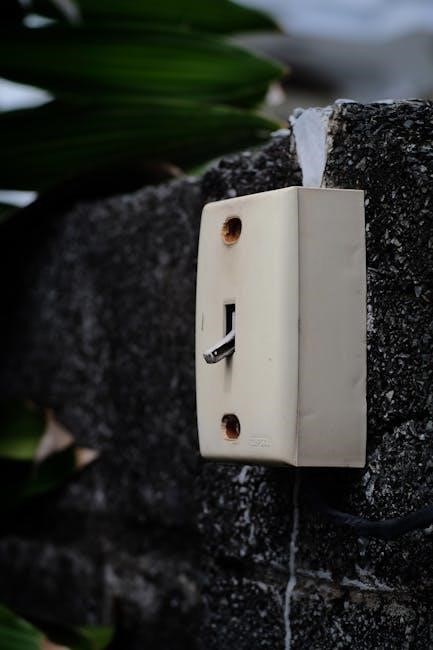
Installation Requirements for a 100A Manual Transfer Switch
Proper site preparation, correct wiring, and compliance with local electrical codes ensure safe and efficient installation. A licensed electrician is recommended to handle the setup correctly.
Site Preparation: Location and Mounting Options
Proper site preparation ensures safe and efficient installation. The switch can be mounted indoors or outdoors, depending on the enclosure type (e.g., NEMA 3R for outdoor use). It should be located near the electrical panel for easy access and must comply with local electrical codes. Ensure the area is clear of obstructions and moisture to prevent damage and ensure reliability.
Wiring Considerations: Neutral, Hot, and Ground Connections
Proper wiring is essential for safe operation. Connect the neutral (white) and hot (black/red) wires to their respective terminals, ensuring correct polarity. The ground wire (green or bare) must be securely attached to the grounding terminal. Verify all connections are tight and follow the manufacturer’s wiring diagram. Improper connections can lead to electrical hazards, so consulting a licensed electrician is recommended for compliance and safety.
Mounting the Switch: Closet vs. Outdoor Installations
Mounting location is critical for functionality and safety. Closet installations offer convenience, consolidating electrical components in one area; Outdoor installations require weather-resistant enclosures, such as NEMA 3R-rated switches, to withstand environmental conditions. Ensure the switch is securely fastened and accessible for easy operation. Always follow local electrical codes and manufacturer guidelines for proper installation, whether indoors or outdoors.
Safety Guidelines for Using a 100A Manual Transfer Switch
General Safety Practices for Transfer Switches
Always turn off power sources before switching to avoid electrical shocks or damage. Ensure proper grounding and follow manufacturer instructions for safe operation.
Avoiding Overloading: Amp and Voltage Ratings
Never exceed the switch’s 100A and 240V ratings. Overloading can cause overheating or failure, risking equipment damage and safety hazards.
Always disconnect power sources before switching to prevent electrical shocks or damage. Ensure proper grounding and follow manufacturer instructions for safe operation. Avoid overloading by adhering to the switch’s 100A and 240V ratings to prevent overheating or failure, which can lead to equipment damage or safety hazards. Regular inspections and maintenance are crucial to ensure reliable performance and compliance with safety standards.
Adhering to the 100A and 240V ratings is crucial to prevent overloading, which can cause overheating, damage, or electrical fires. Never exceed the switch’s capacity, as it may lead to malfunction or safety hazards. Calculate load requirements carefully and ensure all connections comply with the rated specifications to maintain safe and efficient operation of the transfer switch.
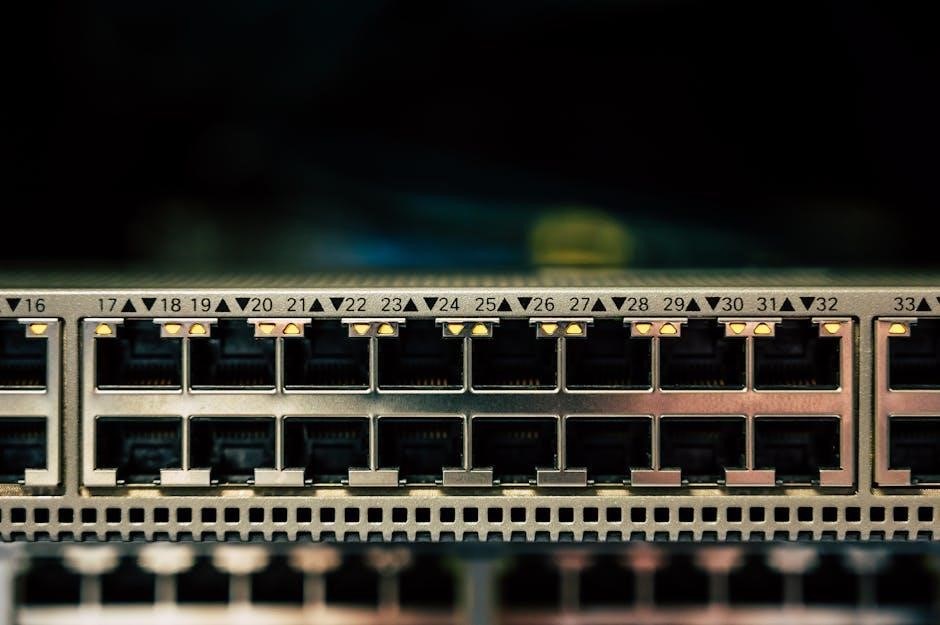
Applications of a 100A Manual Transfer Switch
A 100A manual transfer switch is an essential device for reliable power management, ideal for residential backup systems, commercial essential circuits, and emergency power solutions.
- Residential backup power for homes during outages.
- Commercial use for critical systems like lighting and security.
- Emergency power solutions with generators or solar systems.
Residential Use: Backup Power for Homes
A 100A manual transfer switch is ideal for residential backup power, ensuring seamless switching between utility and generator power during outages. It safeguards home appliances and maintains essential systems like lighting and HVAC. Easy to install and compatible with portable generators, it provides reliable backup solutions for homeowners, ensuring safety and convenience during power interruptions.
Commercial Use: Powering Essential Systems
A 100A manual transfer switch is vital for commercial applications, ensuring uninterrupted power to essential systems like lighting, HVAC, and communication networks during outages. Its reliability and compatibility with generators make it a cornerstone for businesses, minimizing downtime and safeguarding operations in critical environments.
Emergency Power Solutions: Generators and Solar
The 100A manual transfer switch is a key component in emergency power solutions, seamlessly integrating with generators and solar systems to provide reliable backup power. It ensures safe and efficient transitions between utility and alternative power sources, protecting electrical systems from damage during outages and offering a versatile solution for emergency power needs.
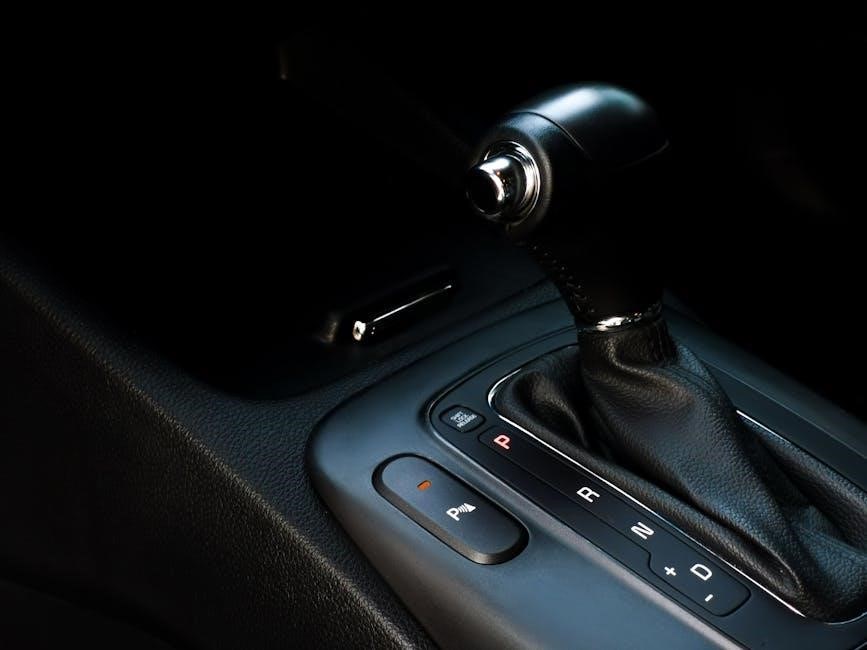
Maintenance and Troubleshooting
Regular maintenance ensures optimal performance, involving cleaning, inspecting contacts, and tightening connections. Addressing issues promptly prevents malfunctions during power transfers.
Troubleshooting common problems like loose connections or faulty switches ensures reliable operation, maintaining electrical system integrity and safety.
Regular Maintenance: Cleaning and Inspection
Regular maintenance involves cleaning the switch contacts and inspecting for wear or corrosion. Use a soft brush to remove dust and debris. Tighten all connections to ensure proper conductivity. Inspect the terminals for any signs of damage or overheating. Perform these checks every 6 months or as recommended by the manufacturer to ensure reliable performance and safety.
Troubleshooting Common Issues: Connection and Switching Problems
Common issues include loose connections, corrosion, or faulty contacts. Check all terminals for tightness and clean corrosion with a wire brush. Ensure proper alignment when switching to avoid arcing. If the switch fails to transfer power, inspect for worn contacts or damaged components. Replace any defective parts promptly to restore functionality and prevent further issues.
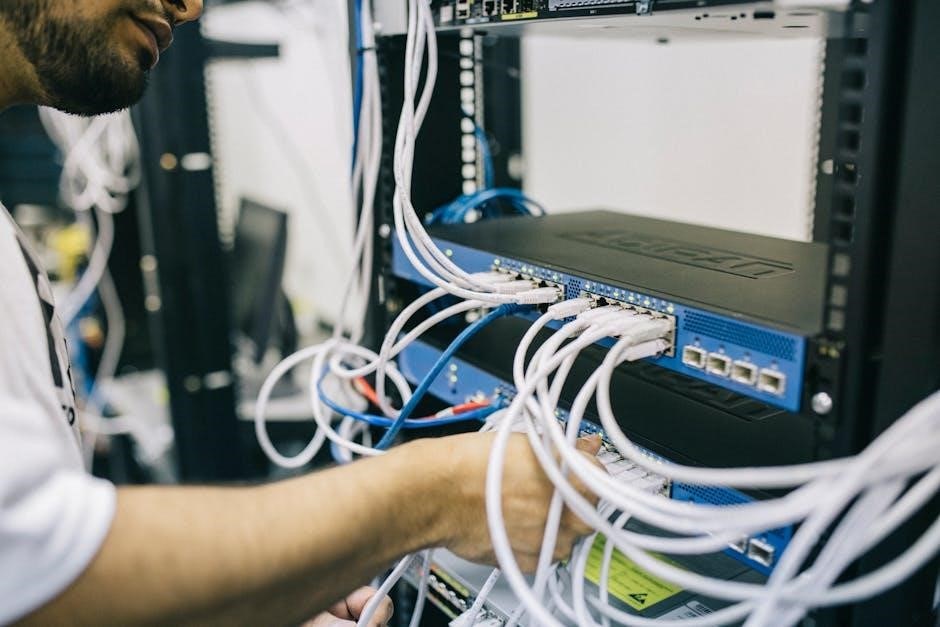
Compliance and Regulations
Ensure the 100A manual transfer switch meets local electrical codes and standards for earthing, bonding, and installation. Compliance guarantees safety and legal operation of the system.
Verify the switch adheres to regulations like NEMA ratings and UL certifications to ensure proper performance and reliability in various environmental conditions.
Earthing and Bonding Requirements
Proper earthing and bonding are essential for the safe operation of a 100A manual transfer switch. Ensure all components are securely grounded to prevent electrical shocks and ensure reliable performance. Bonding all metal parts guarantees equal potential, protecting people and equipment from voltage differences. Compliance with local codes is mandatory for safety and legal operation.
Meeting Local Electrical Codes and Standards
Installing a 100A manual transfer switch requires strict adherence to local electrical codes and standards to ensure safety and compliance. Verify that all connections meet NEC requirements and regional regulations. Proper labeling, wiring, and grounding methods must be followed. A licensed electrician should inspect and approve the installation to guarantee compliance with all applicable standards.
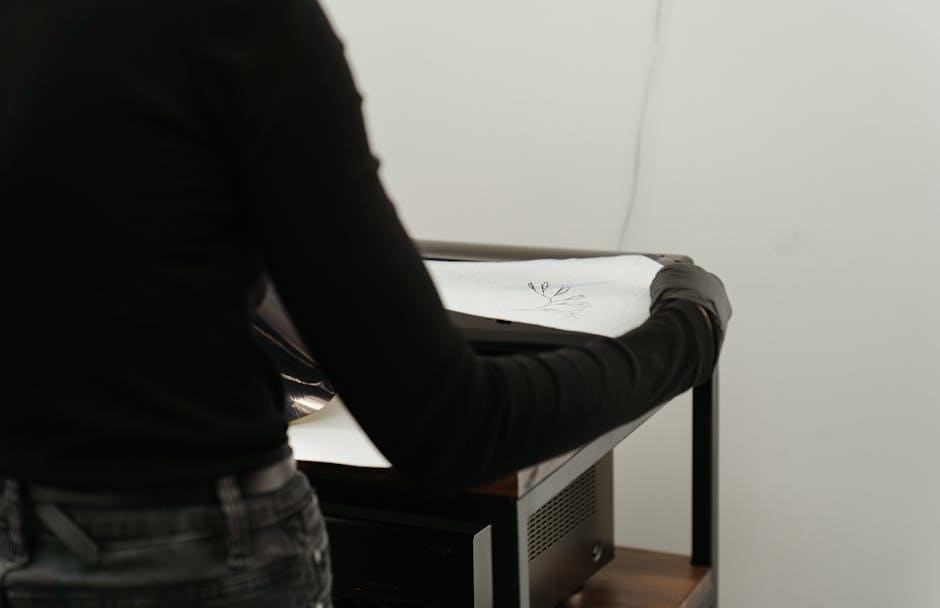
Selecting the Right 100A Manual Transfer Switch
Factors to Consider: Amp Rating, Enclosure, and Compatibility
Choose a 100A manual transfer switch that matches your system’s amp rating, has the right enclosure type (indoor or outdoor), and is compatible with your generator.
Brand and Quality: Generac, Reliance, and Others
Opt for reputable brands like Generac or Reliance for durability and reliability, ensuring the switch meets your specific power management needs and budget requirements.
When selecting a 100A manual transfer switch, consider the amp rating to ensure it matches your electrical system’s requirements. Choose an enclosure type suitable for indoor or outdoor use, such as NEMA 3R for outdoor protection. Verify compatibility with your generator’s voltage and power output, typically 120/240V and 24000W. Ensure the switch aligns with your electrical panel’s configuration for seamless integration and safe operation.
Premium brands like Generac and Reliance offer high-quality 100A manual transfer switches, known for durability and reliability. These brands provide excellent performance, safety, and compliance with electrical standards. While they may be more expensive, their reputation for longevity and efficiency justifies the investment. Other brands can also offer good value, so compare features, reviews, and specifications to find the best fit for your needs.
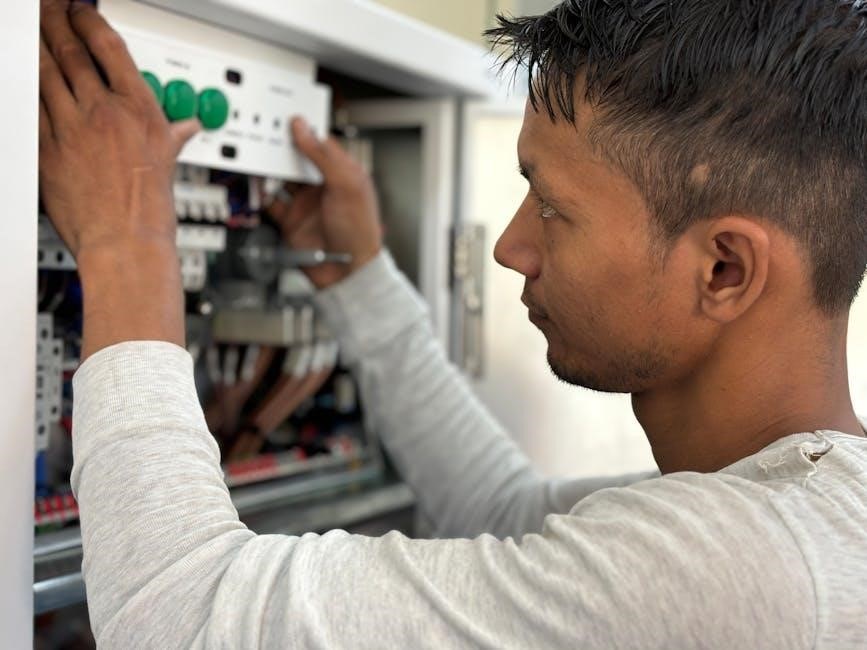
Optional Features and Upgrades
Optional features include circuit breakers and fuses for added protection. Upgrading to 200A may be necessary for higher power demands, ensuring system scalability and efficiency.
Additional Protection Devices: Circuit Breakers and Fuses
Circuit breakers and fuses are essential for safeguarding the 100A manual transfer switch. They interrupt the electrical circuit during overloads or short circuits, preventing damage. Proper sizing ensures they match the switch’s capacity. Upgrading to higher-rated devices may be necessary for systems with increased power demands, ensuring safety and efficiency in operation.
Upgrading from 100A to 200A: When and Why
Upgrading to a 200A manual transfer switch is necessary when electrical demands exceed the 100A capacity, such as adding high-power appliances or expanding commercial operations. It ensures compatibility with higher-rated systems and prevents overload risks. This upgrade future-proofs your electrical setup, accommodating growing energy needs and maintaining reliable power distribution.
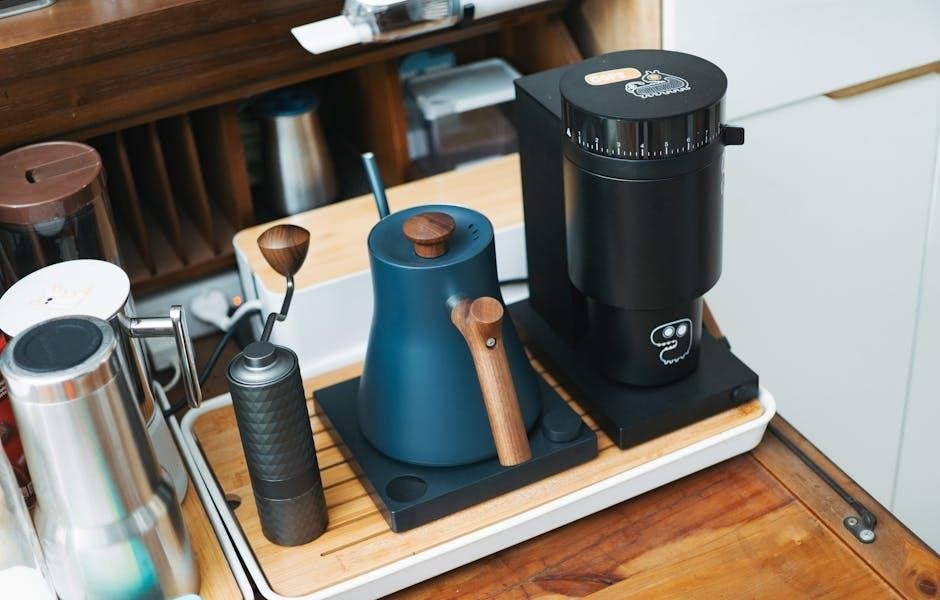
Cost Considerations
100A manual transfer switches range from $200 to $1,000, depending on brand, quality, and features. Installation costs, including labor, can add $300 to $800, ensuring proper setup and safety.
Pricing Range: Budget-Friendly vs. High-End Models
100A manual transfer switches vary in price, with budget-friendly options starting around $200 and high-end models reaching up to $1,000. Factors influencing cost include enclosure type, brand, and additional features like circuit breakers or advanced safety mechanisms. Outdoor models, such as NEMA 3R-rated switches, tend to be more expensive due to their durability and weather resistance.
Installation Costs: Hiring a Licensed Electrician
Installing a 100A manual transfer switch typically requires a licensed electrician, with costs ranging from $300 to $800, depending on location and complexity. Factors like wiring, panel compatibility, and local rates influence the total price. Some electricians may include materials in their labor costs, while others charge separately for parts and permits.

Case Studies and Examples
A residential user successfully installed a 100A manual transfer switch to power essential systems during outages, ensuring reliability. A commercial building used it to maintain critical operations seamlessly.
Real-World Applications: Residential and Commercial
In residential settings, the 100A manual transfer switch is often used to connect backup generators, ensuring power to essential systems like lighting and appliances during outages. Commercial applications include powering critical systems such as retail stores or office equipment, maintaining operations seamlessly. Its versatility makes it a reliable solution for both home and business power management needs;
Success Stories: Efficient Power Management
Homeowners and businesses have successfully used the 100A manual transfer switch to ensure uninterrupted power during outages. For instance, a residential user in Alaska installed it to connect a portable generator, maintaining heat and lights seamlessly. A small retail store employed it to keep operations running, avoiding financial losses during prolonged power failures.
These examples highlight its reliability and ease of installation, making it a trusted solution for efficient power management in both residential and commercial settings.
Final Thoughts on the 100A Manual Transfer Switch
The 100A manual transfer switch is a reliable solution for seamless power transitions. It offers flexibility, safety, and compliance with electrical standards. Ideal for both residential and commercial use, it ensures uninterrupted power supply during outages. Its durability and ease of installation make it a top choice for efficient power management. Future advancements promise even greater efficiency and compatibility, solidifying its role in modern electrical systems.
The 100A manual transfer switch is a versatile and reliable solution for managing power transitions between utility and backup systems. Its robust design ensures safety and efficiency, making it ideal for residential and commercial applications. With proper installation and maintenance, it provides uninterrupted power supply during outages. As technology evolves, the 100A manual transfer switch remains a cornerstone of modern electrical systems, offering durability and adaptability for future power needs.
Future Trends in Transfer Switch Technology
Future trends in transfer switch technology include advancements in smart automation, IoT integration, and enhanced safety features. Next-gen switches will likely incorporate AI-driven diagnostics and remote monitoring capabilities, enabling real-time system management. Additionally, there will be a focus on energy efficiency, with designs optimized for renewable energy sources like solar and wind, ensuring seamless integration with modern power systems.